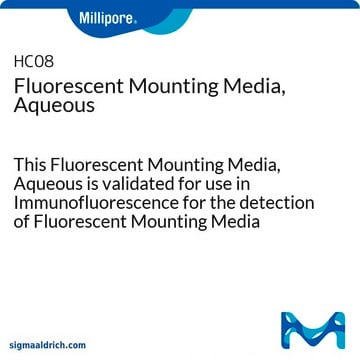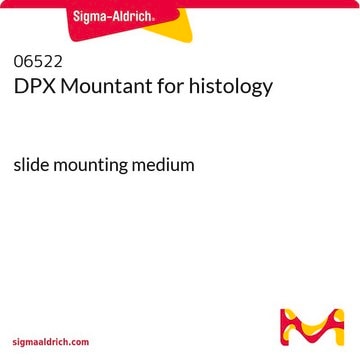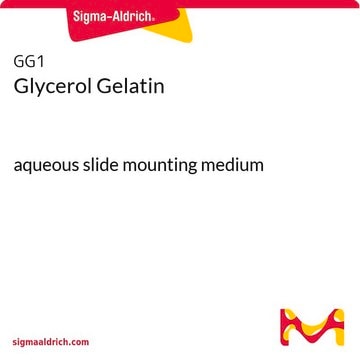Recommended Products
product name
Fluoroshield™, histology mounting medium
Quality Level
form
liquid
technique(s)
immunofluorescence: suitable
pH range
7.8-8.2
solubility
water: soluble
application(s)
diagnostic assay manufacturing
hematology
histology
storage temp.
2-8°C
Related Categories
General description
Application
- as a mounting medium for cultured megakaryocytes and immunostained platelets for confocal microscopy studies
- as a mounting medium for 4′,6-diamidino-2-phenylindole (DAPI) stained heart sections for immunofluorescence studies
- to preserve fluorescence of C6 cell smears
Linkage
Legal Information
related product
Storage Class Code
10 - Combustible liquids
WGK
WGK 1
Flash Point(F)
Not applicable
Flash Point(C)
Not applicable
Certificates of Analysis (COA)
Search for Certificates of Analysis (COA) by entering the products Lot/Batch Number. Lot and Batch Numbers can be found on a product’s label following the words ‘Lot’ or ‘Batch’.
Already Own This Product?
Find documentation for the products that you have recently purchased in the Document Library.
Customers Also Viewed
Articles
Human Protein Atlas uses A-431, U-251 MG, and U-205 cell lines with Prestige Antibodies for organelle mapping.
Human Protein Atlas uses A-431, U-251 MG, and U-205 cell lines with Prestige Antibodies for organelle mapping.
Human Protein Atlas uses A-431, U-251 MG, and U-205 cell lines with Prestige Antibodies for organelle mapping.
Human Protein Atlas uses A-431, U-251 MG, and U-205 cell lines with Prestige Antibodies for organelle mapping.
Our team of scientists has experience in all areas of research including Life Science, Material Science, Chemical Synthesis, Chromatography, Analytical and many others.
Contact Technical Service









